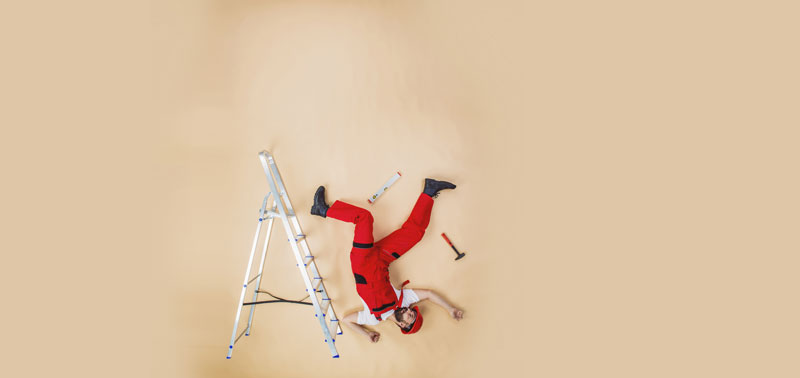Hey, quick question. Where was the rest of your body when your knee fell down the stairs or when your neck was in a car accident?
Over thirty years of experience in various therapeutic capacities has afforded me the opportunity to see a trend that compromises the health and wellness of many people. The bottom line is we have become too compartmentalized in how to therapeutically treat people who have been injured. Areas of the body are treated without consideration or regard for the whole person, physically and emotionally. This is illustrated no better than in the occurrence of accident or injury.
Countless people have fallen down stairs, slipped on ice or been in motor vehicle accidents. Often, diagnostic procedures and treatment are directed toward the “squeaky wheel”.…the body part that hurts. The problem is that the whole body, and everything the body has experienced, contributes to the pain and dysfunction of any one part in the present moment. It’s part of the internal environment. When this body part is ignored during treatment, the injury is only temporarily better or struggles to get better at all. I see many people stuck in dysfunctional cycles which contribute to frustration, hopelessness and depression. The “ABC”s to an integrated treatment approach addresses all the physical and emotional strain patterns AT the time of the accident, BEFORE the accident and the Cumulative, Combined and Compensatory events after the accident.
AT the Time of the Accident: there are many possible physical injuries that occur. Some of these injuries are obvious and are usually treated appropriately. However, there are many other strain patterns (physical and emotional restrictions) that “fly below the radar”. They are significant and have a tremendous effect on the entire body to heal. An example seen in almost all accidents and injuries is the lodging of physical force. It creates tightening and tensions the body has to overcome. It’s exhausting. It obstructs healing. It contributes to the compensatory mechanisms further putting the body at risk for more problems. An example of this force is a torsion force from a car accident in a belted passenger. When the car stops abruptly, the seat belt locks and a rotation happens in the spine and rib cage. This force creates a strain pattern the body has to work around. Many patients I see who are not getting better after an accident have a torsion force stuck in their bodies.
BEFORE the Accident: you existed. Every bump, bruise, injury, illness or mechanical and postural strain pattern that was never resolved is part of your internal environment at the time of the accident. Some of these strain patterns lie dormant and others are actively creating symptoms. When there is an accident or injury, all the acute strain patterns that happen AT the time of the accident are layered on top of everything that currently exists in the body. Immediately after the accident, some strain patterns that were dormant are now activated; they are creating their own effect on you. Often, the new and old strain patterns are entangled creating a more complex physical environment. Many patients I have seen that are not responding to treatment often have complex strain patterns limiting the effects of specific and isolated treatment.
The CUMULATIVE, COMBINED AND COMPENSATORY processes begin immediately after the accident. The A + B is creating new strain patterns in a slow cumulative way. As time goes on, the compensatory strain patterns begin to emerge as changes in posture, movement or tightening in response to pain occur. These patterns may exacerbate symptoms from the “AT”, the “BEFORE, or create an even more complex pattern, the “ABC”. Many patients that I see, sometimes years after the accident, present with this latter pattern. To treat just the back or the knee or the neck is insufficient and ineffective. It is also EXHAUSTING and EMOTIONALLY challenging for the patient.
By addressing the ABCs and the emotional factors stored in the body, wellness is both attainable and sustainable. By “listening” to the wisdom of the body, the pathway of an integrated approach becomes clear. Isolated events or body parts cannot be separated from each other. People must be seen and treated as whole, in the entirety of their physical and emotional experiences. Healing is not a linear process. You are not one dimensional and your therapy shouldn’t be either.
DJ Horn LPC, PT CST is a dynamic mixed-arts therapist uniting the skill and arts of Physical Therapy, Psychotherapy and Craniosacral Therapy. She is owner and principal therapist at Integrated Physical Therapy and Counseling in Hartford CT. Visit: www.integratedifetherapy.com for more information. For a free 30 minutes consultion, call 860-241-1144.
